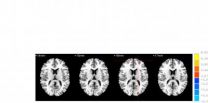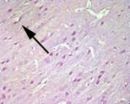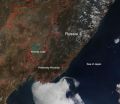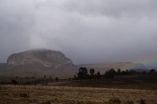(Press-News.org) In science, "simple and accessible detection methods that can rapidly screen a large cell population with the resolution of a single cell inside that population has been seriously lacking," said Virginia Tech chemical engineer Chang Lu.
In the Royal Society of Chemistry journal Chemical Science, Lu has announced that he and his coworkers have developed a novel technique that detects the subcellular location of a protein (Chem. Sci., 2014, DOI: 10.1039/C4SC00578C, http://pubs.rsc.org/en/content/articlelanding/2014/sc/c4sc00578c#!divAbstract). The significance of this method is that the technique will allow the scientific and technological communities a simple and improved method for studying effectiveness of therapies for disease, including cancer.
If a protein is not located in the right subcellular compartment of a cell, "the result can be diseases ranging from metabolic disorders to cancers," Lu explained. "Modulation of protein transport inside a cell is practiced as an important therapeutic approach for cancer treatment. The subcellular location of a target protein can also serve as a useful read-out for high-content screening of cancer drugs."
In the human body, proteins move between distinct compartments inside cells, including the plasma membrane, the nucleus, and other membrane-enclosed areas. This movement can be a prerequisite for proteins to carry out their intended functions. These functions might include gene transcription and other molecular regulations.
In the publication, Lu and his colleagues, Zhenning Cao, a graduate student of the School of Biomedical Engineering and Sciences, Shuo Geng, a postdoctoral researcher, and Liwu Li, professor of biological sciences, all of Virginia Tech, described the shortcomings of current evaluations of protein movement.
One such technique is fluorescence microscopy. According to Lu, it can only analyze a limited number of cells. Data collected by a second existing assay called subcellular fractionation only reflects the average properties of the cell populations "without revealing the heterogeneity that is often present among seemingly identical cells," they stated.
Lu' team had made some progress in screening cell populations in the past using an electroporation-based technique, but it did not allow the examination of native proteins and primary cells isolated from animals and from patients.
Their new work uses a method that "incorporates selective chemical release of cytosolic proteins with a standard procedure for fluorescent labeling of the protein to detect the subcellular location of a native protein," Lu said. This simple and unique tweak to the conventional cell staining process allowed them to accurately define the subcellular location of the protein by measuring the amount of the residual protein after release. Using a flow cytometer, the speed of such measurement could reach 10,000 to 100,000 cells per second.
A key ingredient to their process is the use of saponin, a class of amphipathic glycosides. It dissolves cholesterol and permeates the plasma membrane to allow protein release. "Gentle treatment by saponin shows minimal effects on the state of the cell," Lu added.
INFORMATION:This research was supported by a National Science Foundation grant.
Lu is a past recipient of a prestigious National Science Foundation CAREER Award and a Walter H. Coulter Early Career Award in Biomedical Engineering. He is currently a Dean's faculty fellow at college of engineering of Virginia Tech. He is also a core member of the School of Biomedical Engineering and Sciences, part of the Institute for Critical Technology and Applied Science at Virginia Tech.
Following a protein's travel inside cells is key to improving patient monitoring, drug development
2014-04-23
ELSE PRESS RELEASES FROM THIS DATE:
Airport security-style technology could help doctors decide on stroke treatment
2014-04-23
A new computer program could help doctors predict which patients might suffer potentially fatal side-effects from a key stroke treatment.
The program, which assesses brain scans using pattern recognition software similar to that used in airport security and passport control, has been developed by researchers at Imperial College London. Results of a pilot study funded by the Wellcome Trust, which used the software are published in the journal Neuroimage Clinical.
Stroke affects over 15 million people each year worldwide. Ischemic strokes are the most common and these ...
Gym culture likened to McDonald's
2014-04-23
Visit a typical gym and you will encounter a highly standardised notion of what the human body should look like and how much it should weigh. This strictly controlled body ideal is spread across the world by large actors in the fitness industry.
A new study explores how the fitness industry in many ways resembles that of fast food. One of the authors is from the University of Gothenburg.
McDonaldisation of the gym culture is the theme of an article published in Sports, Education and Society, where Thomas Johansson, professor at the University of Gothenburg, together ...
Acupuncture at Waiguan improves activation of functional brain areas of stroke patients
2014-04-23
Both acupuncture at Waiguan (SJ5) and sham acupuncture can activate/deactivate several brain regions in patients with ischemic stroke, but there are some difference in Brodmann areas 4, 6, 8, Brodmann areas 7, 39, 40, Brodmann areas 18, 19, 22 and Brodmann areas 13, 24, 32, 28. Most studies addressing the specificity of meridians and acupuncture points have focused mainly on the different neural effects of acupuncture at different points in healthy individuals. Dr. Ji Qi and co-workers from School of Traditional Chinese Medicine, Southern Medical University in China examined ...
Physicist demonstrates dictionary definition was dodgy
2014-04-23
It is the defining moment that demonstrates a QUT physicist was correct in pointing out a 99-year-old mistake to one of the world's most authoritative dictionaries.
QUT Senior Lecturer in Physics, Dr Stephen Hughes, sparked controversy over how a humble siphon worked when he noticed an incorrect definition in the prestigious Oxford English Dictionary.
In 2010, eagle-eyed Dr Hughes spotted the mistake, which went unnoticed for 99 years, which incorrectly described atmospheric pressure, rather than gravity, as the operating force in a siphon.
Dr Hughes demonstrated ...
Atorvastatin protects against cerebral ischemia/reperfusion injury
2014-04-23
In addition to its lipid-lowering effect, statins exert anti-inflammatory and antioxidant effects as well. Statins also provide protection against renal, pulmonary and myocardial ischemia/reperfusion injury. However, little evidence is available on similar changes in cerebral ischemia/reperfusion injury. Therefore, Dr. Qiuyun Tu and colleagues from Third Xiangya Hospital of Central South University in China verified that atorvastatin, a commonly used lipid-lowering drug, protects against cerebral ischemia/reperfusion injury through anti-infammatory and antioxidant effects. ...
Is nuclear power the only way to avoid geoengineering?
2014-04-23
Los Angeles, London (April 23, 2014). "I think one can argue that if we were to follow a strong nuclear energy pathway—as well as doing everything else that we can—then we can solve the climate problem without doing geoengineering." So says Tom Wigley, one of the world's foremost climate researchers, in the current issue of Bulletin of the Atomic Scientists, published by SAGE. Refusing to take significant action on climate change now makes it more likely that geoengineering will eventually be needed to address the problem, Wigley explains in an exclusive Bulletin interview. ...
Midlife occupational and leisure-time physical activity limits mobility in old age
2014-04-23
Inverse Effects of Midlife Occupational and Leisure Time Physical Activity on Mobility Limitation in Old Age
Strenuous occupational physical activity in midlife increases the risk of mobility limitation in old age, whereas leisure-time physical activity decreases the risk. This is found in a study which followed up 5,200 public sector employees for 28 years. The study was conducted at the Gerontology Research Center in Finland and the Finnish Institute of Occupational Health.
Heavy physical labor is often repetitive, wears the body and lasts for several hours a day. ...
Fires in the Primorsky Province of Russia
2014-04-23
One of the most influential ecological disturbances is fire. Fire can spread so rapidly and for such far distances that its impact on land is for the most part far greater than any other factor. Less than optimal logging practices in the Primorksy region worsen the problems of human-caused fires in this area. Abandoned fields with dry grasses provide the detritus that can fuel an out of control blaze with a single spark.
In southwest Primorsky Province dry grass has been burned for centuries. This uncontrolled method of managing agricultural areas each year turns the ...
New discovery helps solve mystery source of African lava
2014-04-23
EAST LANSING, Mich. — Floods of molten lava may sound like the stuff of apocalyptic theorists, but history is littered with evidence of such past events where vast lava outpourings originating deep in the Earth accompany the breakup of continents.
New research at Michigan State University shows that the source of some of these epic outpourings, however, may not be as deep as once thought. The results, published in the Journal Geology, show that some of these lavas originated near the surface rather than deep within the mantle.
When geoscientists want to learn more about ...
Non-uniform genetic mutations identified in lung cancers could lead to targeted treatment
2014-04-23
The research, published in the journal Oncotarget, explored tumour heterogeneity – where different cells have different appearances or their own DNA signatures within the same cancer. Such differences could make it difficult to design effective, targeted treatment strategies.
Firstly they confirmed the mutual exclusivity between the EGFR mutation and either the KRAS or BRAF mutation. Secondly, they found that lung cancers driven by the EGFR gene mutation have that specific mutation present uniformly throughout the tumour, regardless of microscopic appearance. In stark ...





